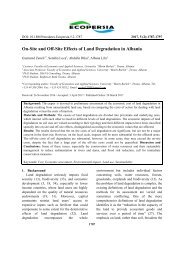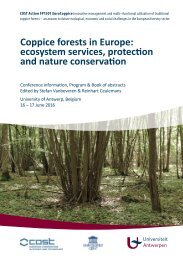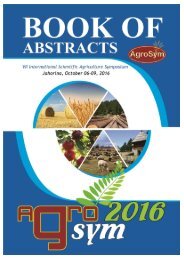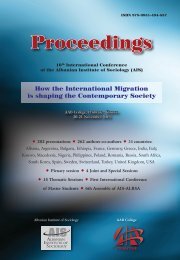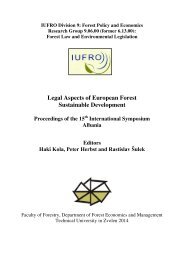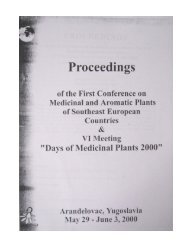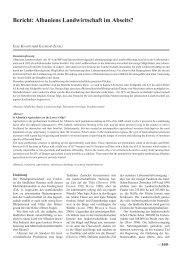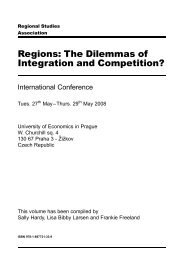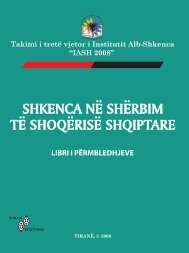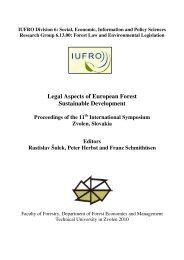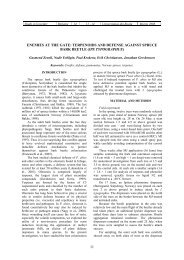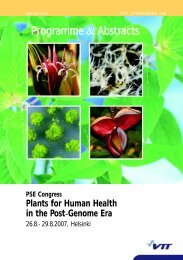Create successful ePaper yourself
Turn your PDF publications into a flip-book with our unique Google optimized e-Paper software.
INDUCED CHEMICAL DEFENSES IN CONIFERS 13<br />
distinguished. One is a group of homodimeric GPP synthases (sequences from<br />
Citrus sinensis, Quercus robur, Arabidopsis thaliana, and PaIDS3). 44 Another<br />
group of sequences represents the small subunit of the heterodimeric GPP synthases<br />
from Antirrhinum majus and Mentha x piperita. 42,45 The corresponding large<br />
subunits of these proteins nest separately within the main group of GGPP synthases,<br />
an appropriate position, since these are reported to have GGPP synthase activity<br />
when heterologously expressed along without their small subunit partners. 39,42 A<br />
final group of GPP synthases is part of conifer homodimeric GPP and GGPP<br />
synthases, including PaIDS1, 2 and 5. It appears that P. abies has a great number of<br />
different types of GPP and GGPP synthases, perhaps appropriate for a plant that<br />
makes such a variety of terpene metabolites. However, further speculation is<br />
unwarranted until the catalytic function of these genes has been determined. For this<br />
purpose, it is necessary to express them heterologously and assay the enzymatic<br />
activity of the encoded proteins.<br />
To this point, we have tested the expression of four of the six P. abies IDS<br />
genes in E. coli by cloning them into expression vectors which produce proteins with<br />
a fused His-tag to facilitate purification. Sequences for PaIPS1, PaIPS5, and<br />
PaIPS6 were first truncated to remove putative transit peptides. The recombinant<br />
proteins were extracted, purified on a Ni 2+ -agarose column (Fig. 1.7) and assayed<br />
with IPP and each of the various allylic diphosphate substrates (Fig. 1.8). The<br />
PaIDS4 protein was shown to make FPP with a small quantity of GPP. The proteins<br />
designated PaIDS5 and PaIDS6 make solely GGPP, as might be expected from their<br />
sequences, while curiously PaIDS1 makes GPP and GGPP in an approximate 2:1<br />
ratio. There is as yet no precedent for an isoprenyl diphosphate synthase that makes<br />
both GPP and GGPP in substantial amounts, but does not produce any FPP.<br />
However, since P. abies terpene resin contains about equal amounts of GPP products<br />
(monoterpenes) and GGPP products (diterpenes), the existence of an isoprenyl<br />
diphosphate synthase that makes both in vivo is an intriguing possibility. Additional<br />
study is underway to see if PaIDS1 makes both products in vivo. To learn more<br />
about the role of these genes in the plant, we are also investigating their expression<br />
pattern in various organs and tissues in relation to terpene formation. In addition, we<br />
are developing a transformation system for P. abies and hope to use these genes to<br />
try to manipulate terpene formation in transgenic saplings. Plants with altered<br />
terpene profiles would supply ideal material for experiments to test the roles of<br />
terpene resins against herbivores and pathogens.



